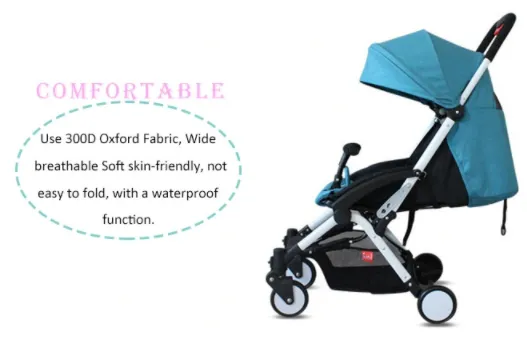
- Afrikaans
- Albanian
- Amharic
- Arabic
- Armenian
- Azerbaijani
- Basque
- Belarusian
- Bengali
- Bosnian
- Bulgarian
- Catalan
- Cebuano
- Corsican
- Croatian
- Czech
- Danish
- Dutch
- English
- Esperanto
- Estonian
- Finnish
- French
- Frisian
- Galician
- Georgian
- German
- Greek
- Gujarati
- Haitian Creole
- hausa
- hawaiian
- Hebrew
- Hindi
- Miao
- Hungarian
- Icelandic
- igbo
- Indonesian
- irish
- Italian
- Japanese
- Javanese
- Kannada
- kazakh
- Khmer
- Rwandese
- Korean
- Kurdish
- Kyrgyz
- Lao
- Latin
- Latvian
- Lithuanian
- Luxembourgish
- Macedonian
- Malgashi
- Malay
- Malayalam
- Maltese
- Maori
- Marathi
- Mongolian
- Myanmar
- Nepali
- Norwegian
- Norwegian
- Occitan
- Pashto
- Persian
- Polish
- Portuguese
- Punjabi
- Romanian
- Russian
- Samoan
- Scottish Gaelic
- Serbian
- Sesotho
- Shona
- Sindhi
- Sinhala
- Slovak
- Slovenian
- Somali
- Spanish
- Sundanese
- Swahili
- Swedish
- Tagalog
- Tajik
- Tamil
- Tatar
- Telugu
- Thai
- Turkish
- Turkmen
- Ukrainian
- Urdu
- Uighur
- Uzbek
- Vietnamese
- Welsh
- Bantu
- Yiddish
- Yoruba
- Zulu
Jan . 14, 2025 11:10 Back to list
New National Standard Electric Bicycle 48V20AH Men′s and Women′s Two Wheel Electric Bicycles Hot Sale
Navigating the world of affordable e-bikes can feel overwhelming with countless options boasting various features. Achieving quality and performance under the $1000 mark is not just possible but can transform your cycling experience, offering both utility and excitement. Here’s a deep dive into the essential aspects that should be considered when selecting an e-bike priced below $1000, drawing from my extensive expertise and experience in the field.
Equally important is the bike’s frame and construction. Durability doesn’t have to be sacrificed for affordability. High-tensile steel frames or aluminum options are common in the sub-$1000 category and offer resilience and reduced weight. Testing ride comfort is crucial; ensure the frame supports a comfortable seating position to prevent fatigue on longer journeys. Furthermore, consider bikes that include suspension forks, which significantly cushion the ride over bumps. Safety and compliance features should never be compromised. E-bikes must adhere to regional regulations, ensuring top speeds and motor power are within legal limits. Brands often include safety features such as reflective tires, integrated headlights, and horn systems even at lower price points. It's vital to choose a model that's not only legal but safe for everyday use. A blend of brand reliability and manufacturer reputation plays a significant role in the decision-making process. Research consumer reviews meticulously. Major manufacturers with established support networks can provide peace of mind, knowing assistance is available if needed. While emerging brands may offer competitive pricing, ensure they have positive customer feedback and a solid warranty policy. Choosing the best e-bike under $1000 boils down to prioritizing personal needs and verifying technology compatibility and quality assurances. With the right knowledge and research, you can confidently invest in an e-bike that efficiently meets your transportation and recreational needs, blending affordability with functionality without compromising on quality. As the e-bike market continues to grow, staying informed about advancements and innovations will ensure you make decisions that are both savvy and sustainable, setting the stage for enjoyable long-term riding experiences.


Equally important is the bike’s frame and construction. Durability doesn’t have to be sacrificed for affordability. High-tensile steel frames or aluminum options are common in the sub-$1000 category and offer resilience and reduced weight. Testing ride comfort is crucial; ensure the frame supports a comfortable seating position to prevent fatigue on longer journeys. Furthermore, consider bikes that include suspension forks, which significantly cushion the ride over bumps. Safety and compliance features should never be compromised. E-bikes must adhere to regional regulations, ensuring top speeds and motor power are within legal limits. Brands often include safety features such as reflective tires, integrated headlights, and horn systems even at lower price points. It's vital to choose a model that's not only legal but safe for everyday use. A blend of brand reliability and manufacturer reputation plays a significant role in the decision-making process. Research consumer reviews meticulously. Major manufacturers with established support networks can provide peace of mind, knowing assistance is available if needed. While emerging brands may offer competitive pricing, ensure they have positive customer feedback and a solid warranty policy. Choosing the best e-bike under $1000 boils down to prioritizing personal needs and verifying technology compatibility and quality assurances. With the right knowledge and research, you can confidently invest in an e-bike that efficiently meets your transportation and recreational needs, blending affordability with functionality without compromising on quality. As the e-bike market continues to grow, staying informed about advancements and innovations will ensure you make decisions that are both savvy and sustainable, setting the stage for enjoyable long-term riding experiences.
Latest news
-
The Ultimate Kids' Four-Wheeler Experience
NewsJul.09,2025
-
The Ultimate Guide to Mountain Bikes: Gear Up for Your Ride
NewsJul.09,2025
-
The New Age of Cycling: Electric Bikes for Every Rider
NewsJul.09,2025
-
The Best Kids Bicycles: Ride in Style and Safety
NewsJul.09,2025
-
The Best 3-Wheel Scooters for Kids: Fun, Safety, and Adventure
NewsJul.09,2025
-
Revolutionize Your Ride: Affordable Electric Bikes
NewsJul.09,2025
-
Finding the Perfect Mountain Bike for Every Rider
NewsJul.09,2025



